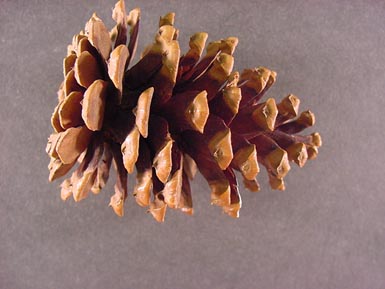Form: This is a large tree reaching 150 to 180 ft. in height and a dbh of 3 to 4 ft. It also has a conical crown and a flat top.
Needles:
Arrangement: usually 3 per fascicle, but sometimes has 2 per fascicle
Length: 5-10" long
Shape: n/a
Other: When crushed needles have a turpentine smell.
Bark: The bark is nearly black on young trees and is cinnamon colored with deep furrows on mature trees.
Cones: The cones are 3 to 6" long and have a reddish-brown color. They are armed with a short prickle.

Distinguishing characteristics: The twigs are stout and orange in color. The buds often covered with resin and the needles smell of turpentine when crushed. This tree has slow growth and takes around 350 to 500 yrs to reach maturity.
Range: This is a western species. It is the most widely spread pines of the U.S. and occurs between 4,000 and 8,000 ft. in elevation.
Silvics: This species is intolerant and occurs on mesic to dry mountain slopes, canyons, and ridges.
Ecological and cultural importance: This tree is a widely used timber species. It provides cover and food for various species of wildlife. It is susceptible to damage by dwarf mistletoe.